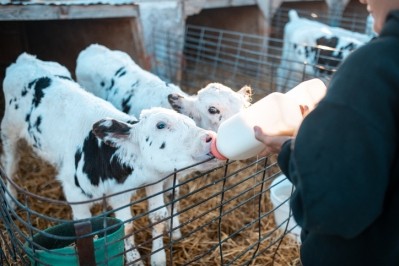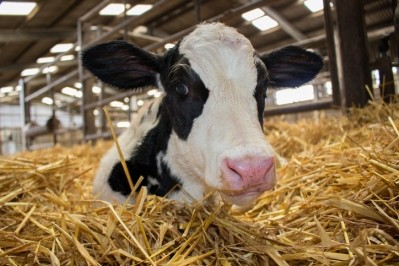EFSA’s calf welfare guidance: The industry view

EFSA launched a public consultation last autumn seeking input from the scientific community and all interested parties on its draft opinion on the welfare of calves. The review period was open from September 29 to November 4, 2022; EFSA said it received a total of 177 comments via its website.
The Authority published a report documenting its answers to the comments received and notes explaining how the information provided was incorporated into the scientific opinion, where relevant.
Its Panel on Animal Health and Welfare (AHAW) adopted its final scientific opinion on February 22, 2023.
“EFSA seems to have disregarded a number of our comments, which we can only deeply regret as they were motivated by the practical experience of operators,” Arnaud Bouxin, Director for Feed Safety and Regulatory Affairs, European Feed Manufacturers' Federation (FEFAC), told us.
Peter Mölder, veterinarian at Dutch young animal nutrition specialist, Denkavit, also outlined how the EFSA welfare experts dismissed his input in relation to references in the draft opinion on recommended fiber intake for veal calves. “They simply rejected our feedback with little in the way of explanation for doing so.”
Calf welfare recommendations
The AHAW Panel’s recommendations to improve the welfare of calves include increasing space allowance, keeping calves in stable groups from an early age, ensuring good colostrum management and increasing the amounts of milk fed to dairy calves.
In addition, calves should be provided with deformable lying surfaces, water via an open surface and long‐cut roughage in racks.
The young animals should be kept with the dam for a minimum of one day, although longer contact is recommended due to the welfare benefits for both calf and cow.
Regarding specific recommendations for veal systems, calves should be kept in small groups (two-seven animals) within the first week of life, provided with around 20 m2/calf and fed on an average of 1 kg neutral detergent fiber (NDF) per day, preferably using long‐cut hay.
Fiber focus
The EFSA scientists argued that the inability to chew and ruminate was identified as the most important welfare consequence experienced by calves provided with a limited amount of fiber in their diets.
“The fiber content of the feed influences the time a calf spends ruminating. Other identified gastroenteric disorders relevant for veal calves are poor rumen development and rumen hyperkeratinisation but due to lack of data on the quantity and type of fiber associated with these welfare consequences, these were not further considered.
“The relationship between NDF amount and rumination behavior was estimated via an adapted expert elicitation procedure. It was estimated that a mean daily intake of 1 kg of NDF is needed for calves aged 2 weeks to 6 months, to show the full extent of rumination behavior that would be observed in a calf with no restriction of fiber. It was estimated that, when provided a restricted amount of fiber (assumed as on average 0.19 kg NDF/day), calves would spend on average 5.5 less hours ruminating than if provided fiber ad libitum.”
Mölder noted that solid feed intake depends on the amount of calf milk replacer (CMR) calves consume.
He cited research undertaken by Laura Webb that showed that when hay was offered ad libitum, calves consumed 1000 g DM per day. “That would constitute a daily intake of 600 g NDF.”
Webb’s study was conducted at Wageningen University, the Netherlands, and it investigated the dietary preferences and behavior of calves given unlimited access to five diet components: milk replacer, concentrate, maize silage, hay, and barley straw from 5 to 27 weeks of age. Preferences and behavior were recorded at 3 and 6 months of age.”
The paper, said Mölder, shows the young calves’ dietary preference. They choose milk replacer and concentrate over other feed.
Thus, in order for calves to consume 1 kg of NDF daily, it would potentially require restricting their access to milk, which would be against nature and against their preference, and potentially a welfare issue, he argued.
The EFSA panel referenced data showing that a calf aged between 14 days and 6 months, when provided with an unrestricted amount of fiber (NDF), is expected to spend 30% of a day ruminating.
However, Mölder found there was a lack of foundation in the guidance as to why such calf rumination levels are needed.
Iron levels
In white veal farming, the iron content of diets administered to calves is purposefully kept low to achieve a pale meat color and therefore an increased price per kilogram of meat.
The EFSA welfare specialists also evaluated the risks linked to the deprivation of iron include anemia in their new guidelines.
The panel recommended that measures should be implemented to avoid hemoglobin (Hb) levels under 5.3 mmol/L in veal calves.
“Anemia should be prevented through the provision of highly bioavailable iron through diet rather than corrected with iron injections. The provision of roughage with highly available iron content such as hay should be preferred to ensure a high iron intake rather than the provision of a solid feed composed of straw, cereals and grains or iron-fortified milk replacer.”
EFSA is charged with providing scientific advice to support the decision-making by legislators as part of the ongoing revision of the EU’s animal welfare legislation.








